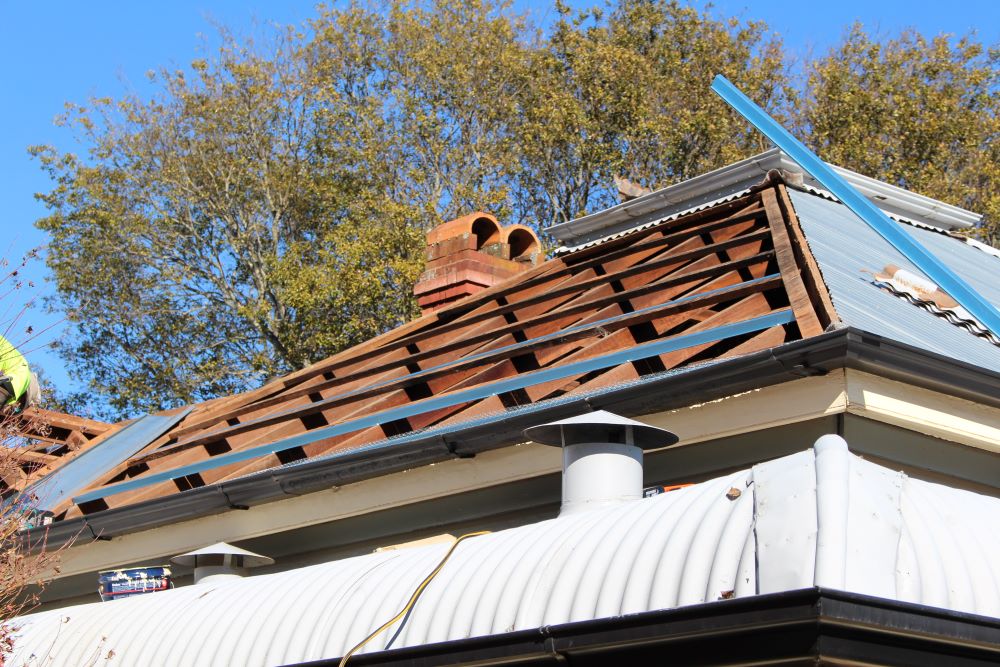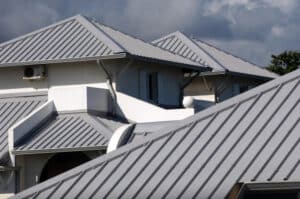A roof is more than just a protective covering; it’s a complex system designed to shield your home from the elements. However, when installed improperly, even the highest-quality materials can’t prevent the cascade of issues that follow. From hidden flaws to inadequate ventilation, poor installation practices can lead to frequent and costly repairs. Let’s delve into the critical aspects where installation missteps can compromise your roof’s integrity.
Hidden Flaws in Roof Installations That Cost You Later
Certain oversights during roof installation may not be immediately apparent but can manifest as significant problems over time. These hidden flaws often stem from neglecting essential components or rushing through critical steps.
- Improper Underlayment Installation: Skipping or misplacing the underlayment can lead to moisture penetration, causing rot and mould growth beneath the shingles.
- Incorrect Flashing Placement: Flashing is vital for directing water away from vulnerable areas. Misaligned or poorly sealed flashing can result in leaks, especially around chimneys and skylights.
- Inadequate Sealing: Failing to seal joints and edges properly allows water ingress, leading to internal damage and reduced insulation effectiveness.
Addressing these issues during installation is crucial to prevent long-term damage and ensure the roof’s longevity.
How Skipping Ventilation Leads to Faster Roof Deterioration
Proper ventilation is a cornerstone of a healthy roofing system. Neglecting this aspect can accelerate deterioration and lead to various structural problems.
- Heat Accumulation: Without adequate ventilation, heat builds up in the attic, causing shingles to age prematurely and increasing cooling costs.
- Moisture Build-Up: Trapped moisture fosters mould and mildew growth, compromising indoor air quality and weakening wooden structures.
- Ice Dams Formation: In colder climates, poor ventilation can lead to ice dams, where melting snow refreezes at the roof’s edge, causing water to back up.
Implementing a balanced ventilation system with both intake and exhaust vents is essential to mitigate these risks.
Shortcuts in Roof Fastening That Undermine Durability
The fastening process is critical to the roof’s structural integrity. Taking shortcuts can lead to significant issues later on.
- Under-Driven or Over-Driven Nails: Incorrect nail depth can cause shingles to loosen or become damaged, leading to leaks and wind damage.
- Improper Nail Placement: Placing nails too high or too low on the shingle can compromise its hold, making it susceptible to uplift during storms.
- Inadequate Fastener Quantity: Using fewer fasteners than recommended reduces the roof’s ability to withstand environmental stresses.
Adhering to the manufacturer’s guidelines for fastening ensures the roof remains secure and durable.
Water Leaks & Mould: The Long-Term Cost of Bad Sealing
Sealing is a vital step in roof installation that, if done poorly, can lead to persistent water intrusion and mould issues.
- Unsealed Valleys & Ridges: These areas are prone to water accumulation. Without proper sealing, water can seep into the underlying structures.
- Gutter & Downspout Failures: Improperly sealed gutters can leak, causing water to pool around the foundation and potentially leading to structural damage.
- Inadequate Chimney & Vent Sealing: Gaps around chimneys and vents can allow water to enter, promoting mould growth and wood rot.
Ensuring all joints and penetrations are thoroughly sealed is imperative to prevent these long-term issues.
Why Poor Roof Design & Alignment Trigger Drainage Issues
The design and alignment of a roof play a significant role in its ability to shed water effectively. Flaws in this area can lead to drainage problems and subsequent damage.
- Insufficient Slope: A roof with a pitch that is too shallow may not allow water to drain properly, increasing the risk of leaks.
- Misaligned Gutters: Gutters that are not correctly aligned or pitched can cause water to overflow, damaging the siding and foundation.
- Improper Valley Design: Valleys that are not adequately designed can become water traps, leading to leaks and structural damage.
Attention to design details during installation is crucial to ensure efficient water drainage and prevent related issues.
What Happens When Inspections Are Ignored During Installation
Skipping inspections during the roofing process can allow minor issues to go unnoticed, eventually leading to significant problems.
- Undetected Material Defects: Without inspections, defective materials may be installed, compromising the roof’s integrity.
- Missed Installation Errors: Errors in installation techniques can be overlooked, leading to premature failures.
- Non-Compliance with Building Codes: Ignoring inspections may result in non-compliance with local building regulations, potentially leading to fines or required rework.
By scheduling inspections at key stages of the installation process—such as after decking, underlayment, and final shingle application—homeowners can ensure their roof is safe, compliant and built to perform as intended.
The Impact of Using Substandard Materials in New Roofs
The quality of materials used in roofing directly affects its durability and lifespan. Opting for substandard materials can have detrimental effects.
- Premature Wear & Tear: Low-quality shingles and underlayment may deteriorate faster, necessitating early replacement.
- Reduced Weather Resistance: Inferior materials may not withstand extreme weather conditions, leading to frequent repairs.
- Compatibility Issues: Using materials that are not compatible with each other can cause chemical reactions, leading to degradation.
Investing in high-quality, compatible materials is essential for a long-lasting and resilient roof.
Why Professional Installation Sets the Stage for Roof Longevity
Engaging professional roofing contractors ensures that the installation is performed correctly, setting the foundation for a durable roof.
- Expertise & Experience: Professionals bring knowledge of best practices and adherence to building codes.
- Quality Assurance: They ensure that materials are correctly installed and that all components function together seamlessly.
- Warranty Protection: Professional installation often comes with warranties, providing peace of mind and financial protection.
Choosing experienced professionals for roof installation is a critical step in safeguarding your home against future roofing issues.
Rely on Us for Professional Roof Installations in Toowoomba
At Garden City Roofing, we understand the importance of proper roof installation. Our team is dedicated to delivering high-quality roofing services that stand the test of time. If you’re planning a new roof or suspect issues with your current one, don’t wait for problems to escalate. Contact us today to schedule a consultation and ensure your roof is built to last.
Get in touch with us today to learn more about our services and how we can help protect your home.





